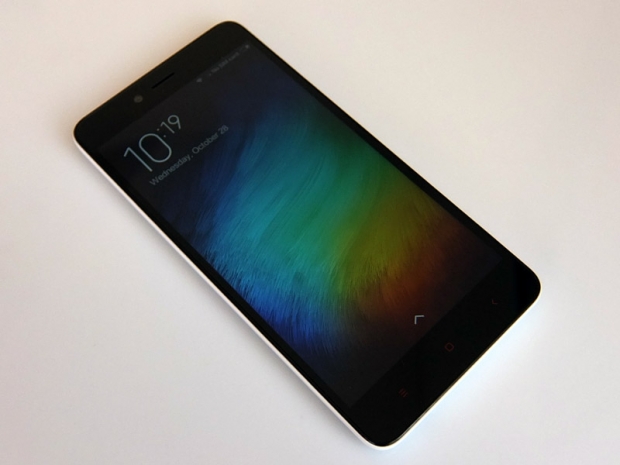Index
Xiaomi Redmi Note 2 Specs and Performance
Since it’s based on MediaTek’s new Helio X10 processor, the Redmi Note 2 should end up a bit faster than competing budget phablets based on MediaTek MT6752 and MT6753 processors. Well, it’s not that simple and we need to take a closer look at the results to point out a few things. Before we do, let’s take a quick look at the full spec and explain what makes the Helio X10 different.
Xiaomi Redmi Note 2 specs:
- SoC: MediaTek Helio X10 (MT6795M) clocked at 2.0GHz, 28nm
- CPU: Eight Cortex-A53 cores up to 2GHz
- GPU: Imagination Technologies PowerVR G6200 GPU up to 550MHz
- RAM: 2GB LPDDR3 933MHz
- Storage: 16GB eMMC 5.0 internal storage (single partition), expandable via microSDXC slot
- Display: 5.5-inch 1080p IPS panel
- OS: Android 5.0.2 w/ MIUI 6 on top
- Rear camera: 13-megapixel Samsung sensor, f/2.2 aperture, PDAF, 78 degree lens
- Front facing camera: 5-megapixel Omnivision OV5670 sensor, f/2.0 aperture, 85 degree lens.
- Battery: 3060mAh lithium polymer, removable
- Dimensions: 152 x 76 x 8.3 mm
- Weight: 160g
- WiFi and Bluetooth: 802.11b/g/n/ac WiFi and Bluetooth 4.0
- Sensors: ambient light, direction, accelerometer, compass, proximity, GPS, A-GPS
- Other noteworthy features: IR blaster
- SIM card: dual SIM (micro SIM), dual standby
- Network support:
- 2G: GSM 900/1800/1900MHz
- 3G: WCDMA 850/900/1900/2100MHz
- 4G: FDD-LTE: 1800/2100/2600MHz, TDD-LTE: B38 / B39 / B40 / B41 (Make sure to check regional compatibility prior to making a purchase)
Let’s start with the Helio X10 processor, which is the biggest differentiator compared to competing budget phablets. While it’s a new chip with an all-new brand, it’s actually not a huge improvement on the MT6752, which is a 1.7GHz octa-core with Mali-T760 graphics.
The Helio X10 features Imagination Technologies PowerVR G6200 graphics, but the new GPU isn’t much faster than the “old” Mali-T760. While the G6200 supports some of the latest standards, such as OpenGL ES 3.1, in real life it doesn’t deliver a significant performance boost (and in some cases it ends up slower than the Mali-T760). The Helio X10 supports 120Hz displays and higher resolution cameras, but as far as end-users are concerned, the processor is not much faster than the MT6752 it replaces.
However, the SoC is not the only thing to check on a smartphone spec sheet. The Remi Note 2 packs fast eMMC 5.0 storage and fast RAM, both of which mean a lot in everyday use, although they are somewhat underrepresented by most benchmarking suites, as they focus on CPU and GPU grunt.
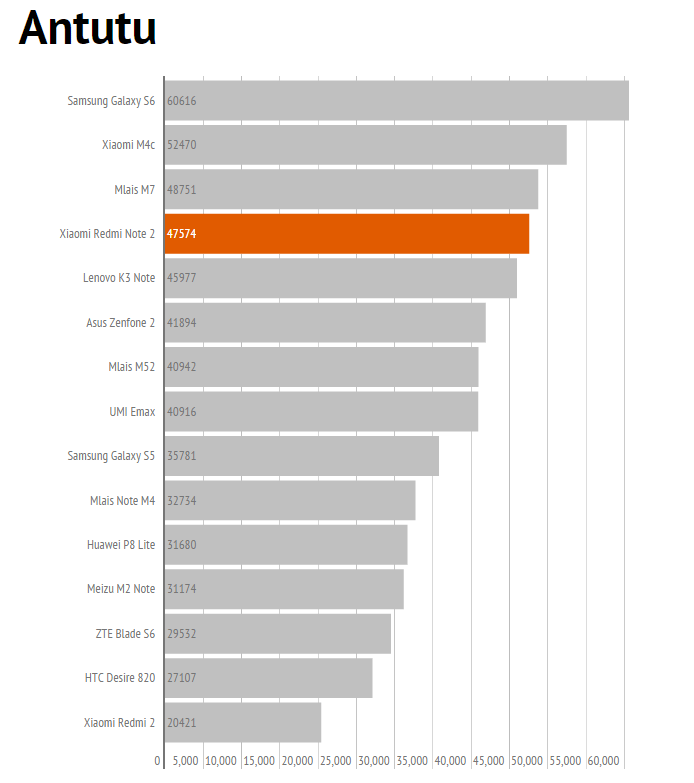
Anyway, in Antutu the Redmi Note 2 scored 47574, which is pretty good. However, it’s not much faster than MT6752 devices, and it’s actually slower than some MT6752 we had a chance to test (namely those with 3GB of RAM).
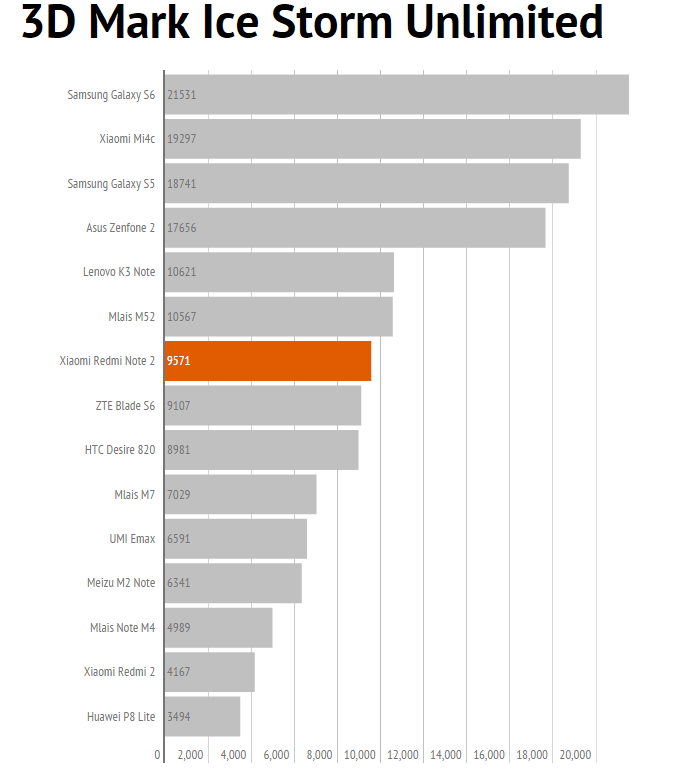
In 3D Mark Ice Storm Extreme we ended up with 9571 points, placing the PowerVR G6200 halfway between the Mali-T760 used in MT6752 chips and the Adreno 405 in the Snapdragon 615.
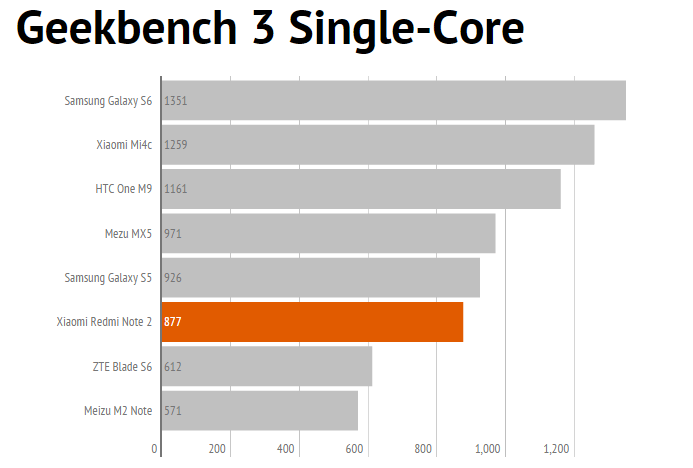
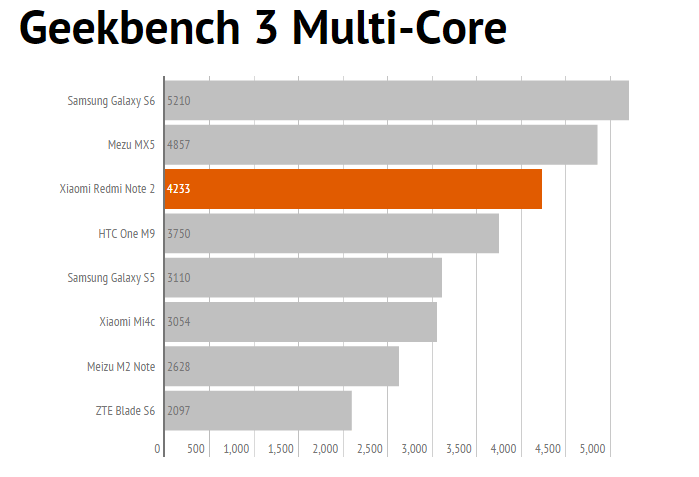
Geekbench reported a single core result of 877 and a multicore score of 4233. Both numbers are pretty good for a Cortex-A53 part. Actually, the single-core score is roughly on a par with 32-bit big cores like the Cortex-A15 and The Krait 400 (Snapdragon 800).
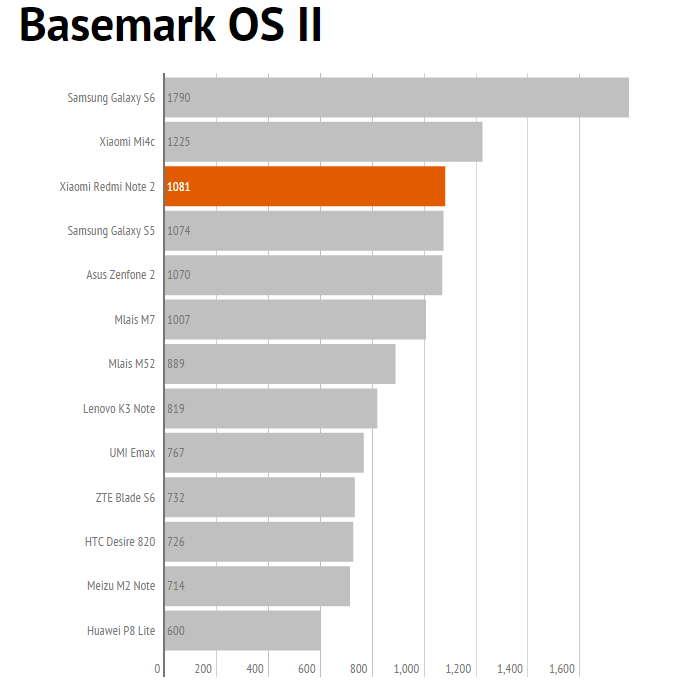
In Basemark OS II, the X10 manages to pull away from the MT6752, with a score of 1081. This barely places it ahead of the Samsung Galaxy S5 and Intel-based Asus Zenfone 2. We’d call it a draw because the results are so close, but it’s a good showing for the MediaTek chip.
Bottom line – the Xiaomi Redmi Note 2 is noticeably faster than the Meizu M2 Note, but it doesn’t manage to pull ahead of the Lenovo K3 Note, which has been around for months and sells for about $20 less.

